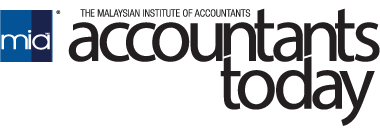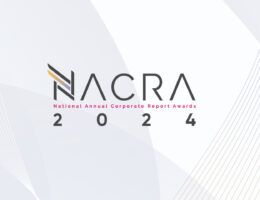By MIA Practice Review Team
This article provides the guidelines on the submission of the Practice Review Questionnaire (PRQ) upon the receipt of the notification letter of Practice Review (PR). By reading this article, practitioners will be made aware of the rationale behind the submission of PRQ which symbolises the commencement of the audit firm’s PR process. This article also allows the audit firm to take into consideration some of the focus areas in their audit performance prior to the submission to PR.
The audit firm can refer to the summary of practice review process under Appendix VI of Section B250 of the By-Laws (on Professional Ethics, Conduct and Practice) of the Malaysian Institute of Accountants (MIA By-Laws) for more information.
(a) Selection for Audit Firm for PR – Risk-Based Approach
Audit firms will be selected for review by the Practice Review Department (PRD) using a risk-based approach via the Institute’s Risk Profiling Database. The selection approach is also in line with the requirements of IFAC Statement of Membership Obligations 1: Quality Assurance. In addition to the risk-based selection, audit firms may also be chosen for PR based on referrals from other regulatory bodies in Malaysia or committees within MIA (the Institute).
For the risk-based approach adopted by PRD, information in the Risk Profiling Database is obtained from the audit firm’s annual return filed with the Institute. The annual return provides key information about the size and activities of the audit firms coupled with other information gathered from external sources by PRD. In ensuring the consistency of our risk profiling mechanism in risk determination of the respective audit firm, it is therefore crucial for the audit firm to ensure timely and accurate submission of the annual return as it forms the foundation of this approach. The risk-based approach takes into consideration several risk factors faced by the audit firm, the risk levels of these factors, the risk scores, and the overall risk of the firm.
The identity of the audit firm is always kept confidential from all parties who are not directly involved in the Practice Review of the firm, including the Practice Review Committee (PRC) and staff of the Institute. Therefore, all audit firms selected will be assigned a code for the purpose of preserving the confidentiality of the identities of the audit firms.
(b) Return of the PRQ and Submission of Audit Client Listings
Once an audit firm is selected for practice review, the Institute will send a written notification of practice review via registered post. The notification letter of selection for practice review comprises the following:
i. The PRQ: The PRQ has been designed to assist the Practice Review team in planning their review work. The size of the audit practice will determine the scale of the Practice Review in terms of the staffing and duration of visit. It will also have some bearing on the sample size of audit engagement files reviewed to confirm the accuracy of the responses provided in the PRQ. Therefore, the audit firm is expected to complete the PRQ diligently.
ii. Submission of Audit Client Listings: Audit firms are required to prepare a complete list of their audit clients, in a prescribed format, and to provide any other information the reviewer considers necessary to facilitate the selection of a representative sample of audit engagements for review. Such listing must be certified as complete by the audit firm prior to the selection of sample audit engagement files. The selection of audit engagement files is made by the reviewer from the most current client listing as provided by the audit firm. The audit firm should always ensure that all current audit engagements which are representative of the operations of the firm should be readily retrievable during the practice review. For the purposes of practice review, such current audit engagement files refer to engagements which have been signed off in the past eighteen (18) months up to the date of the practice review or any other dates that can be reasonably accepted by the reviewer as a practical alternative.
The completed PRQ, along with all the requested information as mentioned above, should be submitted to the Institute within twenty-one (21) days from the date of receipt of the notification. The submission should be made through the designated practitioner of the audit firm, who can be the sole proprietor, the senior partner, or another partner assigned with the responsibility for practice review. Non return of the completed PRQ within the stipulated timeline and/or deferment of submission of documents without any written approval from PRD is a non-compliance with MIA By-Laws and a complaint can be filed against the audit firm. Therefore, it is important for the audit firm to obtain approval for submission within the new timeframe to avoid being penalised. Moreover, it is essential for audit firms to understand that any deferment or lack of cooperation by practitioners in meeting the submission deadline will be factored in and considered during the practice review process.
Upon the receipt of the notification of practice review along with the PRQ and requested information, should the audit firm:
i. Deem that their audit firm meets the criteria as stated in Paragraph (9) of Appendix VI of MIA By-Laws, the audit firm may write in officially to apply for exemption from Practice Review. The audit firm will need to provide the relevant supporting evidence to facilitate the PRD in obtaining approval of exemption from Practice Review from the Practice Review Committee (PRC); or
ii. Wish to apply for extension of time (EOT) to submit the completed PRQ – The audit firm shall write in officially to PRD to seek for approval for the deferment of submission of documents. The audit firm shall, in their application letter, state the reasons for the extension together with relevant and appropriate supporting evidence. Any further extension is at the reviewer’s sole discretion, as guided by the PRD’s Standard Operating Procedures and shall only be granted for valid reasons. Please refer to e-AT dated 1 May 2020 for the article on “Guidelines on Requesting Extension for Practice Review Deadlines”.

(C) Components and Assessment Criteria of PRQ
The PRQ consists of five (5) parts.
Part A: Practice Profile
Audit firms are obligated to prepare a comprehensive list of their audit clients in a specified format, provide any additional information deemed necessary by the reviewer to facilitate the selection of a representative sample of audit engagements for review, and a complete list of all partners indicating whether they have signed any audit reports during the stipulated period and to provide details if the partners of the firm selected for practice review are also partners of any affiliated firms.
For a sole practitioner, the audit firm is required to have a practice continuation arrangement (PCA) pursuant to Section B220 Part 2 of the MIA By-Laws. Therefore, the sole practitioner is required to furnish the reviewer with a copy of the PCA for sighting during the practice review.
Part B & C: Components of International Standard on Quality Management 1 (ISQM 1) and International Standard on Quality Management 2 (ISQM 2)
Part B of the PRQ comprises mainly the requirements of ISQM 1. The reviewer shall carry out a review of the system of quality management of the audit firm and evaluate the degree of reliance to be placed upon it. Audit firms are expected to address all components in the ISQM 1. In each component of ISQM 1 in Part B, there are supplementary questions and matters to consider. These are intended to indicate the system of quality management that is expected to be implemented and operated within each audit firm.
Part C of the PRQ focuses on evaluating the audit firm’s processes and procedures related to ISQM 2. ISQM 2 deals with the appointment and eligibility of the engagement quality reviewer, and the engagement quality reviewer’s responsibilities relating to the performance and documentation of an engagement quality review (EQR). ISQM 2 applies to all engagements for which an engagement quality review is required to be performed in accordance with ISQM 1. The EQR section aims to gather information about how the firm ensures that EQRs are effectively performed. It may inquire about the firm’s policies and procedures for selecting engagements to undergo an EQR, as well as the qualifications and independence of the individuals involved in conducting these reviews.
All questions in Part B and Part C may not necessarily be relevant to some audit firms because of their size and culture etc. However, audit firms should still assess their internal quality management systems to ascertain whether they address the quality objectives for all key areas as expected from ISQM.
Part D: Performance of Audit Engagement
Practice Review’s approach to performing inspections of individual engagements comprises of detailed engagement inspections of the audit firm to assess whether the audit work is conducted in compliance with relevant professional standards, and legal and regulatory requirements. For practical reasons, not all partners of an audit firm that have been selected for Practice Review will be reviewed individually with regards to the current audit engagement files. However, in most circumstances, the samples of audit engagement files selected for Practice Review should be reflective of the firm’s overall operation and size.
Part E: Sign-off
As part of the completion process for the PRQ, the sign-off from the practitioner with the audit firm’s stamp signifies the official endorsement and completion of the PRQ by the responsible authorities (referred herein as the managing partner and/ or sole practitioner or the senior partner of the audit firm) within the audit firm. Affixing the firm’s stamp confirms that the PRQ has been thoroughly reviewed, verified, and approved in accordance with the established policy and procedures of the audit firm.
Conclusion
The PRQ is meant to assist the audit firm to reduce the time cost required to go through the practice review process. By working through the PRQ, the audit firm should be able to identify the gaps for improvements and also, pick up some valuable ways to improve the firm’s system before the commencement of practice review. Therefore, the PRQ should be deemed as a tool for review instead of a mere stand-alone document for submission. In sum, practitioners can be assured that the process of practice review is set out in such a manner so as to be free from bias and enable all parties in the practice review process to carry out their duty without fear or favour.






